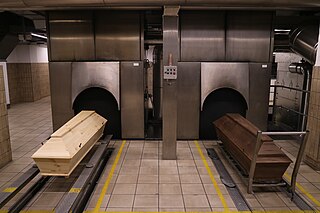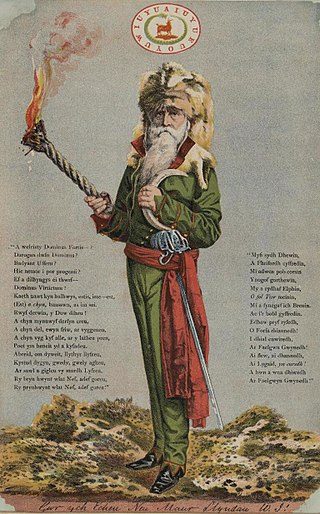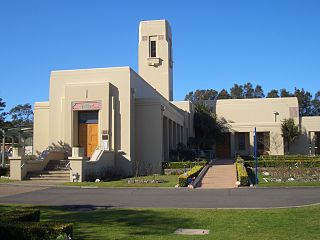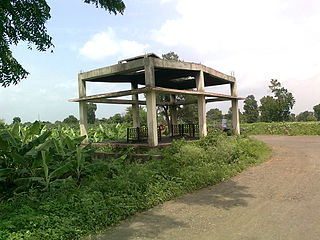
A funeral is a ceremony connected with the final disposition of a corpse, such as a burial or cremation, with the attendant observances. Funerary customs comprise the complex of beliefs and practices used by a culture to remember and respect the dead, from interment, to various monuments, prayers, and rituals undertaken in their honour. Customs vary between cultures and religious groups. Funerals have both normative and legal components. Common secular motivations for funerals include mourning the deceased, celebrating their life, and offering support and sympathy to the bereaved; additionally, funerals may have religious aspects that are intended to help the soul of the deceased reach the afterlife, resurrection or reincarnation.

Cremation is a method of final disposition of a dead body through burning.

The London Necropolis Company (LNC), formally the London Necropolis & National Mausoleum Company until 1927, was a cemetery operator established by Act of Parliament in 1852 in reaction to the crisis caused by the closure of London's graveyards in 1851. The LNC intended to establish a single cemetery large enough to accommodate all of London's future burials in perpetuity. The company's founders recognised that the recently invented technology of the railway provided the ability to conduct burials far from populated areas, mitigating concerns over public health risks from living near burial sites. Accordingly, the company bought a very large tract of land in Brookwood, Surrey, around 25 miles (40 km) from London, and converted a portion of it into Brookwood Cemetery. A dedicated railway line, the London Necropolis Railway, linked the new cemetery to the city.

A pyre, also known as a funeral pyre, is a structure, usually made of wood, for burning a body as part of a funeral rite or execution. As a form of cremation, a body is placed upon or under the pyre, which is then set on fire.

William Price was a Welsh physician and political activist best known for his support of Welsh nationalism, Chartism and involvement with the Neo-Druidic religious movement. Historians have characterised Price as one of the most significant figures in Wales in the Victorian era.
Disposal of human corpses, also called final disposition, is the practice and process of dealing with the remains of a deceased human being. Disposal methods may need to account for the fact that soft tissue will decompose relatively rapidly, while the skeleton will remain intact for thousands of years under certain conditions.
Hindu rituals after death, including Vedic rituals after death, are ceremonial rituals in Hinduism, one of the samskaras based on Vedas and other Hindu texts, performed after the death of a human being for their moksha and consequent ascendance to Svarga (heaven). Some of these vary across the spectrum of Hindu society.

Antyesti literally means "last sacrifice" or "final auspicious ceremony", and refers to the funeral rites for the dead in Hinduism, which usually involves cremation of the body. This rite of passage is the last samskara in a series of traditional life cycle samskaras that start from conception in Hindu tradition. It is also referred to as Antima Samskar, Antya-kriya, Anvarohanyya, or as Vahni Samskara.

Cremation is a method used to dispose of the deceased in the Christian world despite historical opposition to the practice.

Deaths in Singapore offset the population increase from live births. In 2007, 17,140 people in Singapore died from various causes. The death rate was 4.5 deaths per 1,000 of the population. There are strict regulations surrounding death and treatment of the body after death.
Nigambodh Ghat is located on the banks of the Yamuna river coast in New Delhi, situated on the Ring Road, Delhi at the back of the historic Red Fort. It consists of a series of bathing and ceremonial stepped piers leading to the waters of the river. It is most known for being the oldest burning ghat in Delhi for performing Antyesti, Hindu funeral rites and also one of its busiest with 50–60 pyres burning every day. It also has an electric crematorium built in the 1950s and a CNG-run crematorium was added by the Municipal corporation with manages the cremation facilities in 2006.

A crematorium or crematory is a venue for the cremation of the dead. Modern crematoria contain at least one cremator, a purpose-built furnace. In some countries a crematorium can also be a venue for open-air cremation. In many countries, crematoria contain facilities for funeral ceremonies, such as a chapel. Some crematoria also incorporate a columbarium, a place for interring cremation ashes.

Eastern Suburbs Memorial Park, Eastern Suburbs Crematorium and Botany General Cemetery, is a cemetery and crematorium on Bunnerong Road in Matraville, New South Wales, in the eastern suburbs district of Sydney, Australia.

Blackley Cemetery is a large, municipal cemetery situated within the northern suburbs of the city of Manchester, and is owned, operated and maintained by Manchester City Council. The cemetery and crematorium complex is located on Victoria Avenue in the district of Blackley. It was opened in 1953 on land that was previously a golf course.

A śmaśāna is a Hindu crematory ground, where dead bodies are brought to be burnt on a pyre. It is usually located near a river or body of water on the outskirts of a village or town; as they are usually located near river ghats they are also called smashan ghat.

Birmingham Crematorium is a Protestant crematorium in the Perry Barr district of Birmingham, England, designed by Frank Osborne and opened in 1903. A columbarium was added in 1928. The crematorium is now owned and operated by Dignity plc.

Thai royal funerals are elaborate events, organised as royal ceremonies akin to state funerals. They are held for deceased members of the royal family, and consist of numerous rituals which typically span several months to over a year. Featuring a mixture of Buddhist and animist beliefs, as well as Hindu symbolism, these rituals include the initial rites that take place after death, a lengthy period of lying-in-state, during which Buddhist ceremonies take place, and a final cremation ceremony. For the highest-ranking royalty, the cremation ceremonies are grand public spectacles, featuring the pageantry of large funeral processions and ornate purpose-built funeral pyres or temporary crematoria known as merumat or men. The practices date to at least the 17th century, during the time of the Ayutthaya Kingdom. Today, the cremation ceremonies are held in the royal field of Sanam Luang in the historic centre of Bangkok.
Cremation in Japan was originally practiced by monks seeking to emulate the cremation of the Buddha. Virtually all deceased are now cremated in Japan – as of 2012, it had the highest cremation rate in the world of over 99.9%. The Meiji government attempted to ban the practice in the 19th century, but the ban was only in effect for less than two years.

The Cremation Society of Great Britain was founded in 1874 to promote the use of cremation as an alternative means of dealing with the bodies of the dead instead of burial which until then was the only option. Today the society is a registered charity and is not conducted for profit.















